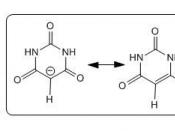Although there are many types of drugs, and many ways to get them, a type of depressant called a barbiturate may be the most commonly misused. Because barbiturates are prescription drugs, and usually prescribed for people who went through or are going through rough emotional times, there is no way to definitely tell when or when not someone needs the drug. The following paragraphs will explain how depressants work, the way barbiturates are taken, and the effects they have on the body.
Depressants are the most common type of drug, simply because they slow down the body's functions, reaction times, and ability to work. Depressants come in many forms (such as pain killers and alcohol), and barbiturates cover a large section of these. Because barbiturates are used to relieve pain, or calm people down, they are widely prescribed for people who have panic attacks, or are going through very rough times in their lives.
Even though new drugs are coming out on the market, barbiturates are widely prescribed for people who are not 'upper class'. The price and availability of barbiturates make them one of the most commonly misused prescription drugs on the market.
The most common way people take barbiturates is through a pill. However, an increasing number of people are beginning to have the drug injected. These are people who become very dependant on the drug. The reason they inject the drug instead of taking it orally, is because it has a quicker, and sometimes longer-lasting effect. Most of the people who misuse barbiturates seem to prefer taking them orally because they don't enjoy self-injections, and a few moments after taking these drugs, they don't have enough coordination or energy to use a needle.
Because barbiturates are mostly prescription drugs, the drug abuser has to be able to fool the doctor's and pharmacists long enough to make them think they need the drug. A good example of this type of person is forty-eight-year-old Lynn Ray: Lynn states: "I became a very good actor. I thought I needed these drugs no matter what, even if I had to bamboozle the doctors to get them." However, Lynn is only one of the half million barbiturate abusers in the United States. Her story is very common among people with similar problems, and is now speaking out at quarterly seminars against misusing prescription drugs.
Like many people, Lynn also had no idea of the effects these types of drugs may have on her. Barbiturates are prescribed for a reason. The smallest overdose (only a few milligrams) could have devastating effects on the human body. There are numerous cases of people who have had sever brain damage, their limbs paralyzed, or have fallen into a coma because of their bad habits. For example, in 1970 Jimi Hendrix died of a barbiturate overdose. The less severe side-effects include slurred speech, sluggishness, disorientation, and lack of coordination. When mixed with alcohol, the risk of having one of these effects occur is seven times greater with every ounce of alcohol consumed.
Especially with barbiturates, withdrawal can be a very difficult, and dangerous time. When someone finally admits to their problem, instead of just deciding not to take these drugs, they should see a specialist right away. When going only two days without the drug they are so accustomed to, the addict may start to experience anxiety attacks, insomnia, and stomach problems. They may also experience hallucinations and seizures as little as one week without their drug. This occurs because the body becomes extremely dependant on the barbiturate they have been taking. Over time, the brain can not function properly without the drug, and attempts to fix the problem by releasing certain chemicals that may harm the body.
Everyone thinks that 'This will never happen to me', but the statistics don't lie. In the years 1985 to 1990, one out of every 500 people who were prescribed barbiturates showed signs of addiction. From 1995 to 2000, this number has increased to one of every 200. These are very disturbing figures, because in the span of only a few years, the number of people who became addicted increased by over one-hundred percent. This number supposedly has gone down in the last two years because of the invention of a new type of drug aimed at replacing barbiturates. However, this new drug is extremely expensive ( over $150 for a thirty day period), and most people are unable to afford it.
Barbiturates have many names, such as stingers, barbs, and downers. But in the medical world, they are known as sedative-hypnotics, and they get this name for a reason. When taken, barbiturates are almost forcing the body to go to sleep, and whoever took them seems to be in a trance, oblivious to the world around them. Because the drug may stay in a person's body for up to two weeks, this effect seems to last from day to day, even if it is not being taken. A certain type of barbiturate called Methaqualone is especially dangerous, and the most commonly abused. Methaqualone is such a strong barbiturate, the user may become dependant upon as soon as they take the first dose. However, because Methaqualone is this powerful, several prescriptions are needed before a physician will resort to using it. Even after this, people who are dependant will do whatever it takes to get the drug. Barbiturates are an extremely addictive and dangerous type of drug. They can cause comas, and other severe physical (as well as mental) ailments. The abuser however, doesn't seem to care about this at all, and all they need or want, is their drug.
Below is a table of the estimated number of barbiturate abusers from different years.
Year Users Abusers Percent 1988 25000 1250 5% 1990 24500 1300 5% 1992 22000 1300 6% 1994 73500 2000 3% 1996 402500 2130 .5% 1998 385000 3250 .8% 2000 75600 3000 4% 2002 ? ? ? These numbers show that although the number of users is changing, and lowering, the number of people abusing barbiturates is rising. The most likely explanation, is that the addicted people are still using the drug because of their dependency.





